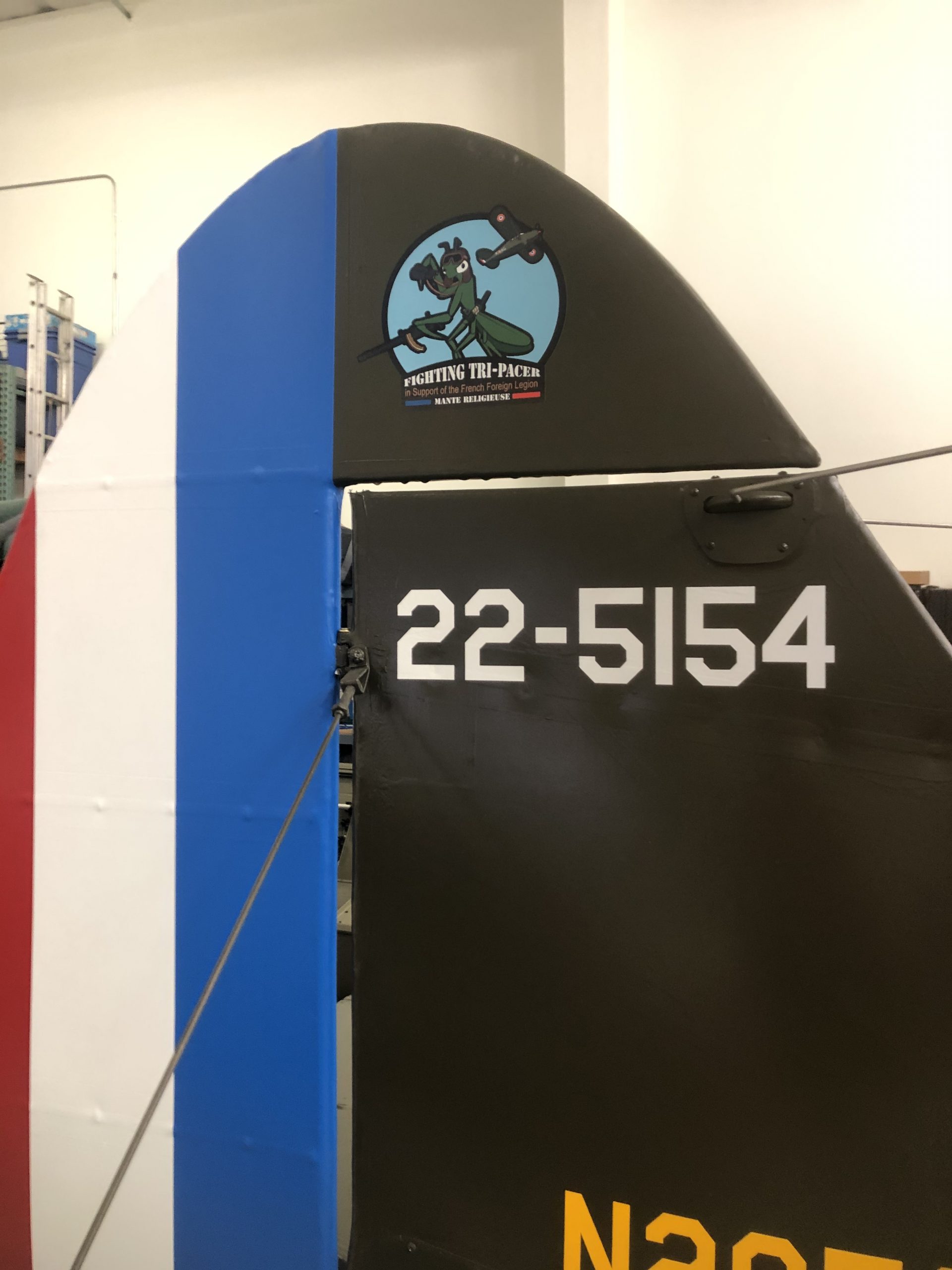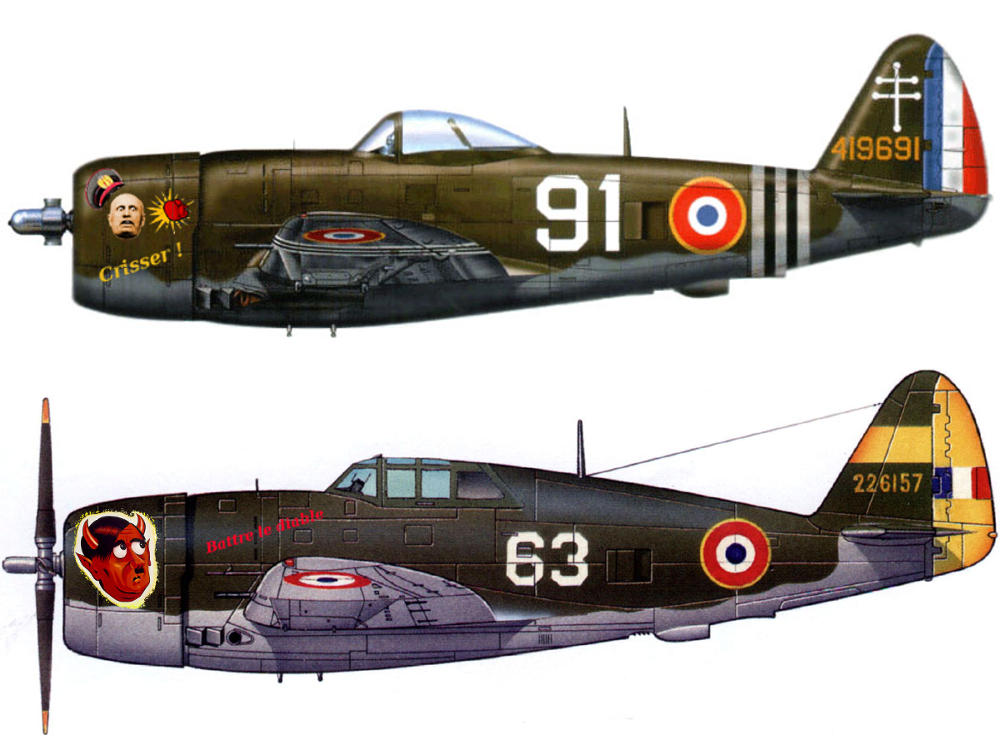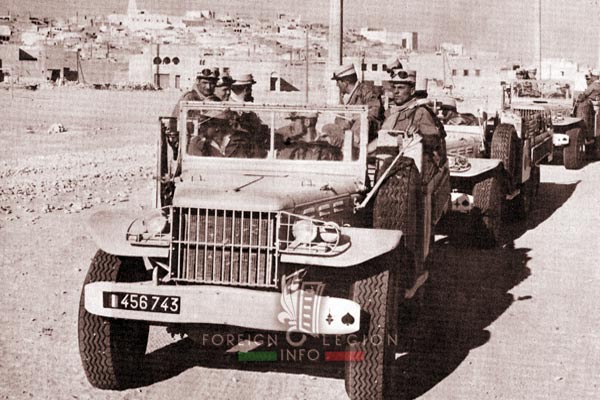Tail Art on N2650A following the traditions of the French Air Force.
The Fighting Tri Pacer tail art follows the French tradition of air crews designing and placing nose and tail art on thier individual airplanes. "Mante Religueuse" Praying Mantis (in english) was ideally suited for the mission of N2650A.
She is definitely not your "Fathers Milk Stool" which the Piper Tri Pacer took on as a nick-name as the characteristic nose wheel gave a tripod look. N2650A struck from ambush with devastating results. Calling in artillery on enemy units, tacking their movement and in providing instant ground support enabled units of the French Paratroopers in the French Foreign Legion to accomplish seemingly impossible missions!
Pilots would reduce power and swing around the mountainous terrain in Algerian and Africa many times getting the jump on ememy forces in the open or setting up ambushes before advancing French Legionnaire units. This writers own experience as a US Marine Corps armor officer, saw Marines breath easier when a Marine OV 10 aircraft or Cobra Gun Ship was flying shotgun for our armor column! The other four countries use of Piper Tri Pacers proved as effective as the French Marine Corps aircraft in Africa.



